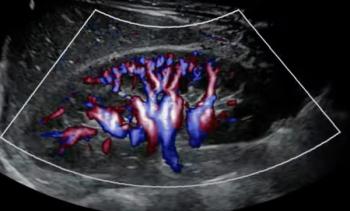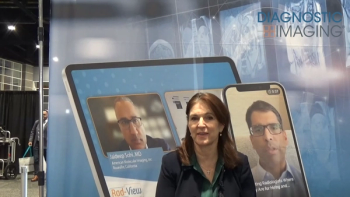
German cine 3-D firm opens U.S. subsidiary
Tomographic Technologies (TomTec) of Munich has established aU.S. subsidiary to help commercialize its innovative cine three-dimensional(or 4-D, with time as the fourth dimension) ultrasound scannerfor cardiac applications. The German company, formed by
Tomographic Technologies (TomTec) of Munich has established aU.S. subsidiary to help commercialize its innovative cine three-dimensional(or 4-D, with time as the fourth dimension) ultrasound scannerfor cardiac applications. The German company, formed by a groupof former Kontron imaging engineers, showed its Echo-CT scannerat the American Heart Association meeting in Anaheim, CA, lastNovember (SCAN 12/4/91).
"We are formulating our marketing plans while awaitingFDA 510(k) clearance to market Echo-CT in the U.S.," saidIvan Young, president of the new TomTec company.
The U.S. subsidiary, headquartered in El Toro, CA, will beresponsible for marketing, sales and servicing the system in NorthAmerica. Young was formerly an ultrasound manager with ToshibaAmerica Medical Systems.
The Echo-CT system is based on a patented transesophageal echocardiography(TEE) probe that permits the ultrasound transducer to move freelyup and down a rigid tube and acquire dynamic images of the heart.
The TEE probe has a fully flexible assembly of multiple, semicircularplastic segments at the distal end. After insertion through thepatient's esophagus, the end of the probe is mechanically straightenedby the surgeon to form a rigid tube, enabling the transducer tobe moved up and down, providing exact parallel slices.
A stepping motor attached to the system helps move the transducerup the tube in time with the patient's cardiac R-R interval andrespiration. The transducer is equipped with a water-filled balloonin order to achieve optimal contact with the esophagus. The systemcan store images with a maximal frame-rate of 30 frames per second.
Images are reconstructed in about 15 minutes following removalof the transducer, Young said.
"This technology is comparable to the introduction of2-D (ultrasound) technology, which made high-performance color-flowimages possible. Now we are adding the fourth dimension, or movement,to this (3-D) technology," he said.
Echo-CT is in use in Europe and in clinical trials at the Universityof Kentucky in Lexington.
"We are encouraged by the initial test results, whichwill be presented at the next American Heart Association meeting,"Young said.
Newsletter
Stay at the forefront of radiology with the Diagnostic Imaging newsletter, delivering the latest news, clinical insights, and imaging advancements for today’s radiologists.




























